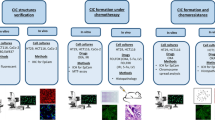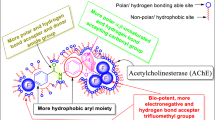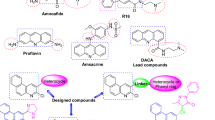Abstract
An analysis of the activity of compounds tested in pre-clinical in vivo and in vitro assays by the National Cancer Institute's Developmental Therapeutics Program was performed. For 39 agents with both xenograft data and Phase II clinical trials results available, in vivo activity in a particular histology in a tumour model did not closely correlate with activity in the same human cancer histology, casting doubt on the correspondence of the pre-clinical models to clinical results. However, for compounds with in vivo activity in at least one-third of tested xenograft models, there was correlation with ultimate activity in at least some Phase II trials. Thus, an efficient means of predicting activity in vivo models remains desirable for compounds with anti-proliferative activity in vitro. For 564 compounds tested in the hollow fibre assay which were also tested against in vivo tumour models, the likelihood of finding xenograft activity in at least one-third of the in vivo models tested rose with increasing intraperitoneal hollow fibre activity, from 8% for all compounds tested to 20% in agents with evidence of response in more than 6 intraperitoneal fibres (P< 0.0001). Intraperitoneal hollow fibre activity was also found to be a better predictor of xenograft activity than either subcutaneous hollow fibre activity or intraperitoneal plus subcutaneous activity combined. Since hollow fibre activity was a useful indicator of potential in vivo response, correlates with hollow fibre activity were examined for 2304 compounds tested in both the NCI 60 cell line in vitro cancer drug screen and hollow fibre assay. A positive correlation was found for histologic selectivity between in vitro and hollow fibre responses. The most striking correlation was between potency in the 60 cell line screen and hollow fibre activity; 56% of compounds with mean 50% growth inhibition below 10–7.5 M were active in more than 6 intraperitoneal fibres whereas only 4% of compounds with a potency of 10–4 M achieved the same level of hollow fibre activity (P< 0.0001). Structural parameters of the drugs analysed included compound molecular weight and hydrogen-bonding factors, both of which were found to be predictive of hollow fibre activity. © 2001 Cancer Research Campaign
Similar content being viewed by others
Article PDF
Change history
16 November 2011
This paper was modified 12 months after initial publication to switch to Creative Commons licence terms, as noted at publication
References
Alley MC, Scudiero DA, Monks A, Hursey ML, Czerwinski MJ, Fine DL, Abbott BJ, Mayo JG, Shoemaker RH and Boyd MR (1988) Feasibility of drug screening with panels of human tumor cell lines using a microculture tetrazolium assay. Cancer Res 48: 589–601
DeVita VT, Hellmann S and Rosenberg SA (1982). Cancer Principles and Practice of Oncology, Lippincott-Raven: Philadelphia
DeVita VT, Hellmann S and Rosenberg SA (1985). Cancer Principles and Practice of Oncology, Lippincott-Raven: Philadelphia
DeVita VT, Hellmann S and Rosenberg SA (1989). Cancer Principles and Practice of Oncology, Lippincott-Raven: Philadelphia
DeVita VT, Hellmann S and Rosenberg SA (1993). Cancer Principles and Practice of Oncology, Lippincott-Raven: Philadelphia
DeVita VT, Hellmann S and Rosenberg SA (1997). Cancer Principles and Practice of Oncology, Lippincott-Raven: Philadelphia
Dykes DJ, Abbott BJ, Mayo JG, Harrison, Jr SD, Laster, Jr WR, Simpson-Herren L and Griswold, Jr DP (1992) Development of human tumor xenograft models for in vivo evaluation of new antitumor drugs. Contrib Oncol 42: 1–22
Gellhorn A and Hirschberg E (1955) Investigation of diverse systems for cancer chemotherapy screening. Cancer Res Suppl 3: 1–125
Ghose AK, Viswanadhan VN and Wendoloski JJ (1999) A knowledge-based approach in designing combinatorial or medicinal chemistry libraries for drug discovery. 1. A qualitative and quantitative characterization of known drug databases. J Comb Chem 1: 55–68
Hahnfeldt P, Panigrahy D, Folkman J and Hlatky L (1999) Tumor development under angiogenic signaling: a dynamical theory of tumor growth, treatment response, and postvasular dormancy. Cancer Res 59: 4770–4775
Hollingshead M, Plowman J, Alley M, Mayo J and Sausville E (1999) The hollow fiber assay. In: Contributions to Oncology, Volume 54: Relevance of Tumor Models for Anticancer Drug Development, Fiebig H, Burger AM (eds) pp. 109–120, Karger: Freiburg
Lipinski CA, Lombardo F, Dominy BW and Feeney PJ (1997) Experimental and computational approaches to estimate solubility and permeability in drug discovery and development settings. Adv. Drug Delivery Rev 23: 3–25
Monks A, Scudiero D, Skehan P, Shoemaker R, Paull K, Vistica D, Hose C, Langley J, Cronise P, Vaigro-Wolff A, Gray-Goodrich M, Campbell H, Mayo J and Boyd M (1991) Feasibility of a high-flux anticancer drug screen using a diverse panel of cultured human tumor cell lines. J Natl Cancer Inst 83: 757–766
Paull KD, Shoemaker RH, Hodes L, Monks A, Scudiero DA, Rubinstein L, Plowman J and Boyd MR (1989) Display and analysis of patterns of differential activity of drugs against human tumor cell lines: development of the mean graph and COMPARE algorithm. J Natl Cancer Inst 81: 1088–1092
Paull KD, Hamel E and Malspeis L (1995) Prediction of biochemical mechanism of action from the in vitro antitumor screen of the National Cancer Institute. In: Cancer Chemotherapeutic Agents, Foye WO (ed) pp. 9–45, Americal Chemical Society: Washington, DC
Phillips RM, Pearce J, Loadman PM, Bibby MC, Cooper PA, Swaine DJ and Double JA (1998) Angiogenesis in the hollow fiber tumor model influences drug delivery to tumor cells: implications for anticancer drug screening programs. Cancer Res 58: 5263–5266
Plowman J, Dykes DJ, Hollingshead M, Simpson-Herren L and Alley MC (1997) Human tumor xenograft models. In: Anticancer Drug Development Guide: Preclinical Screening, Clinical Trials, and Approval, Teicher B (ed) pp. 101–125, Humana Press: Totowa, NJ
Sausville EA and Feigal E (1999) Evolving approaches to cancer drug discovery and development at the National Cancer Institute, USA. Annals Oncol 10: 1287–1291
Scholz CC, Berger DP, Winterhalter BR, Henss H and Fiebig HH (1990) Correlation of drug response in patients and in the clonogenic assay with solid human tumour xenografts. Eur J Cancer 26: 901–905
Venditti JM (1981) Preclinical drug development: rationale and methods. Seminars Oncol 8: 349–361
Venditti JM, Wesley RA and Plowman J (1984) Current NCI preclinical antitumor screening in vivo: results of tumor panel screening, 1976–1982, and future directions. Adv Pharmacol Chemother 20: 1–19
Zubrod CG, Schepartz S, Leiter J, Endicott KM, Carrese LM and Baker CG (1966) The chemotherapy program of the National Cancer Institute: history, analysis and plans. Cancer Chemother Rep 50: 349–540
Author information
Authors and Affiliations
Rights and permissions
From twelve months after its original publication, this work is licensed under the Creative Commons Attribution-NonCommercial-Share Alike 3.0 Unported License. To view a copy of this license, visit http://creativecommons.org/licenses/by-nc-sa/3.0/
About this article
Cite this article
Johnson, J., Decker, S., Zaharevitz, D. et al. Relationships between drug activity in NCI preclinical in vitro and in vivo models and early clinical trials. Br J Cancer 84, 1424–1431 (2001). https://doi.org/10.1054/bjoc.2001.1796
Received:
Revised:
Accepted:
Published:
Issue date:
DOI: https://doi.org/10.1054/bjoc.2001.1796
Keywords
This article is cited by
-
A review of animal models utilized in preclinical studies of approved gene therapy products: trends and insights
Laboratory Animal Research (2024)
-
Anti-cancer effect of afatinib, dual inhibitor of HER2 and EGFR, on novel mutation HER2 E401G in models of patient-derived cancer
BMC Cancer (2023)
-
Preclinical models in head and neck squamous cell carcinoma
British Journal of Cancer (2023)
-
Factors impacting the efficacy of the in-situ vaccine with CpG and OX40 agonist
Cancer Immunology, Immunotherapy (2023)
-
Counting the cost of public and philanthropic R&D funding: the case of olaparib
Journal of Pharmaceutical Policy and Practice (2022)



